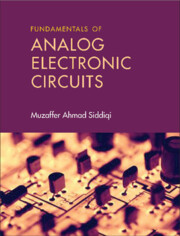Refine search
Actions for selected content:
211712 results in Engineering
Stability analysis on the angular dynamics of a spheroid in simple shear flow: influence of slip-induced fluid-inertial torque
-
- Journal:
- Journal of Fluid Mechanics / Volume 1021 / 25 October 2025
- Published online by Cambridge University Press:
- 13 October 2025, A1
-
- Article
- Export citation
Plate induced tones in installed supersonic jets
-
- Journal:
- Journal of Fluid Mechanics / Volume 1021 / 25 October 2025
- Published online by Cambridge University Press:
- 13 October 2025, A9
-
- Article
- Export citation
Effects of injector geometry on acoustically coupled flame dynamics
-
- Journal:
- Journal of Fluid Mechanics / Volume 1021 / 25 October 2025
- Published online by Cambridge University Press:
- 13 October 2025, A2
-
- Article
-
- You have access
- Open access
- HTML
- Export citation
Monopole and quadrupole capillary interaction in turbulent interfacial suspensions
-
- Journal:
- Journal of Fluid Mechanics / Volume 1021 / 25 October 2025
- Published online by Cambridge University Press:
- 13 October 2025, R1
-
- Article
-
- You have access
- Open access
- HTML
- Export citation
Evaluating and benchmarking data-driven performance forecasting techniques for infrastructure asset management
-
- Journal:
- Data-Centric Engineering / Volume 6 / 2025
- Published online by Cambridge University Press:
- 13 October 2025, e49
-
- Article
-
- You have access
- Open access
- HTML
- Export citation

Wireless Power Transfer for Unmanned Aircraft
- Fundamentals, Design, and Control
-
- Published online:
- 10 October 2025
- Print publication:
- 30 October 2025
Three-dimensional interaction between uniform current and a submerged horizontal cylinder in an ice-covered channel – CORRIGENDUM
-
- Journal:
- Journal of Fluid Mechanics / Volume 1020 / 10 October 2025
- Published online by Cambridge University Press:
- 10 October 2025, E3
-
- Article
-
- You have access
- HTML
- Export citation
Taylor–Aris dispersion of active particles in oscillatory channel flows
-
- Journal:
- Journal of Fluid Mechanics / Volume 1021 / 25 October 2025
- Published online by Cambridge University Press:
- 10 October 2025, A3
-
- Article
-
- You have access
- Open access
- HTML
- Export citation
Phase-based analysis and control of low-Reynolds-number aeroelastic flows
-
- Journal:
- Journal of Fluid Mechanics / Volume 1020 / 10 October 2025
- Published online by Cambridge University Press:
- 10 October 2025, R4
-
- Article
-
- You have access
- Open access
- HTML
- Export citation
Broadband water wave reflector with customisable frequency range enabled by floating metaplates
-
- Journal:
- Journal of Fluid Mechanics / Volume 1020 / 10 October 2025
- Published online by Cambridge University Press:
- 10 October 2025, A50
-
- Article
-
- You have access
- Open access
- HTML
- Export citation
Maximum drag reduction state of viscoelastic turbulent channel flow: marginal inertial turbulence or elasto-inertial turbulence – ERRATUM
-
- Journal:
- Journal of Fluid Mechanics / Volume 1020 / 10 October 2025
- Published online by Cambridge University Press:
- 10 October 2025, E2
-
- Article
-
- You have access
- HTML
- Export citation
A design method of differential game guidance law based on Dubins path and neural network
-
- Journal:
- The Aeronautical Journal , First View
- Published online by Cambridge University Press:
- 10 October 2025, pp. 1-21
-
- Article
- Export citation
Shape dynamics of nearly spherical, multicomponent vesicles under shear flow
-
- Journal:
- Journal of Fluid Mechanics / Volume 1020 / 10 October 2025
- Published online by Cambridge University Press:
- 09 October 2025, A49
-
- Article
-
- You have access
- Open access
- HTML
- Export citation
Ekman-driven buoyancy flux in quasi-geostrophic flow
-
- Journal:
- Journal of Fluid Mechanics / Volume 1020 / 10 October 2025
- Published online by Cambridge University Press:
- 09 October 2025, A56
-
- Article
-
- You have access
- Open access
- HTML
- Export citation

Fundamentals of Analog Electronic Circuits
-
- Published online:
- 08 October 2025
- Print publication:
- 31 December 2025
-
- Textbook
- Export citation
Wave and vortex structures in transitional mixing layers: a numerical investigation
-
- Journal:
- Journal of Fluid Mechanics / Volume 1020 / 10 October 2025
- Published online by Cambridge University Press:
- 08 October 2025, A48
-
- Article
- Export citation
Spiral vortex flows of the counter-rotating Taylor–Couette system in the narrow-gap limit
-
- Journal:
- Journal of Fluid Mechanics / Volume 1020 / 10 October 2025
- Published online by Cambridge University Press:
- 08 October 2025, A53
-
- Article
- Export citation
Multi-scale method for the solution of the concentration distribution in a two-layered channel flow
-
- Journal:
- Journal of Fluid Mechanics / Volume 1020 / 10 October 2025
- Published online by Cambridge University Press:
- 08 October 2025, A54
-
- Article
- Export citation
Stochastic dynamics of vortex-acoustic lock-in: effects of coloured, multiplicative noise
-
- Journal:
- Journal of Fluid Mechanics / Volume 1020 / 10 October 2025
- Published online by Cambridge University Press:
- 08 October 2025, A55
-
- Article
- Export citation
On deep-learning-based closures for algebraic surrogate models of turbulent flows
-
- Journal:
- Journal of Fluid Mechanics / Volume 1020 / 10 October 2025
- Published online by Cambridge University Press:
- 08 October 2025, A36
-
- Article
-
- You have access
- Open access
- HTML
- Export citation


































